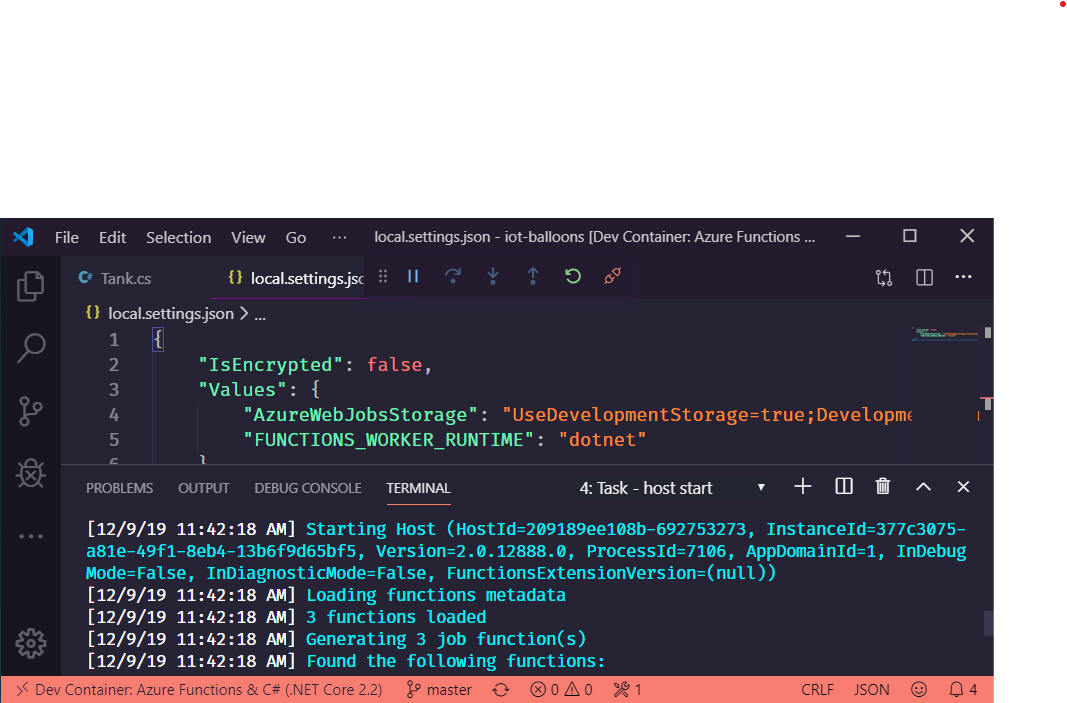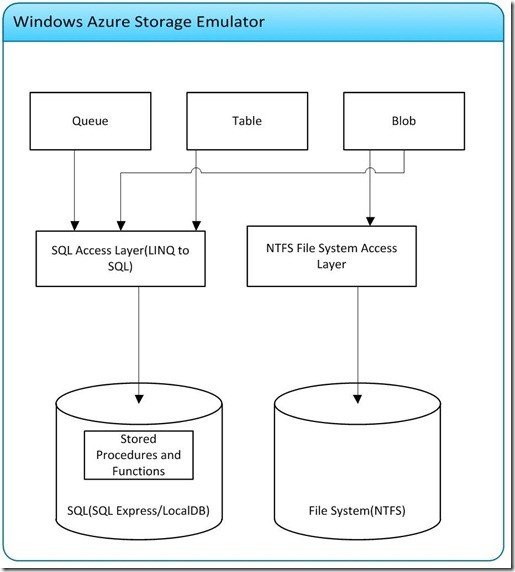

Azure storage emulator connection string how to#
I have a whole post that explains how to start the storage emulator from a shortcut, but the keys are: If you create a regular old Web Site and run that in Visual Studio, the Storage Emulator is not turned on. Visual Studio only turns on the Storage Emulator for you when you debug using a Cloud Service, but this is not convenient. You need to know two things: how to turn it on, and how to address it. So that’s the trick – be sure to take advantage of the Storage Emulator, even when you are not targeting a Cloud Service.
Azure storage emulator connection string windows#
This is awesome – of course, it will be popular to create applications destined for Windows Azure Web Sites or Virtual Machines that take advantage of the various Storage Services. It should be in the middle of the diagram because while the local storage emulator is still useful for Cloud Services, you can also use it locally when developing applications targeting Windows Azure Web Sites or Virtual Machines. Notably absent from the diagram is the Storage Emulator. If you are a big success, consider upgrading to Cloud Services. This is good – with more choice comes the freedom to get started more simply – often a Virtual Machine is an easier onramp for existing apps, and a Web Site can be a great onramp for a website that adheres to some of the well-known programming stacks running on PHP, ASP.NET, Python, or Node.js. This diagram at least conceptually should capture the sense that the when to use which model decision has become blurred over time. Since their announcement in 2012, Windows Azure Web Sites and Virtual Machines have been taking on many of the common workloads that used to require Cloud Services. The rest of this post will focus specifically on the Storage Emulator. (Remember, Cloud Services were announced in 2008 – a long time before we had wifi on airplanes!) There are actually two emulators: Compute – which emulates the Cloud Service model by supporting Web Role and Worker Role abstractions, and Storage – which emulates Blob, Table, and Queue Services. Another feature of Cloud Services has always been that it comes with an emulator you can run locally – on your laptop at 30,000 feet was a common way to hammer home the point. This is a powerful model for some scenarios, especially highly scalable applications. Of particular note, Cloud Services run on VMs with disks that are not-persistent – you can write data locally ( some pointers here), but any locally stored data is not guaranteed to stick around. Like my Azure Storage Emulator :).The original programming model for Windows Azure applications was to use Cloud Services (originally known as Hosted Services, but still the same thing). That’s all you need within your container to access your “real” localhost, and everything hosted on it.

How can I possibly access local resources - who are neither on Internet or within another container - from a container? 3 magic words that depends! This morning, I was doing different things with Azure Functions SDK for 25 days of serverless, and for that I needed to access the local Azure Storage Emulator, the one on my local machine - not within a Docker container. Everything, this includes localhost, right?Įhmm.

It allows me to simply pack all my technical stack in one docker container, while getting me everything I need to run and debug things. I LOVE Remote Development Extensions for Visual Studio Code.


 0 kommentar(er)
0 kommentar(er)
